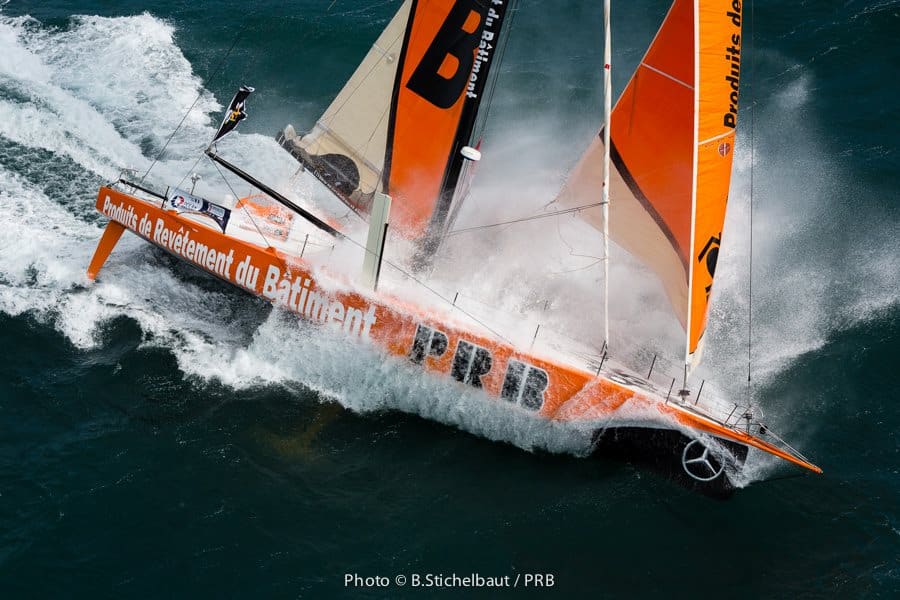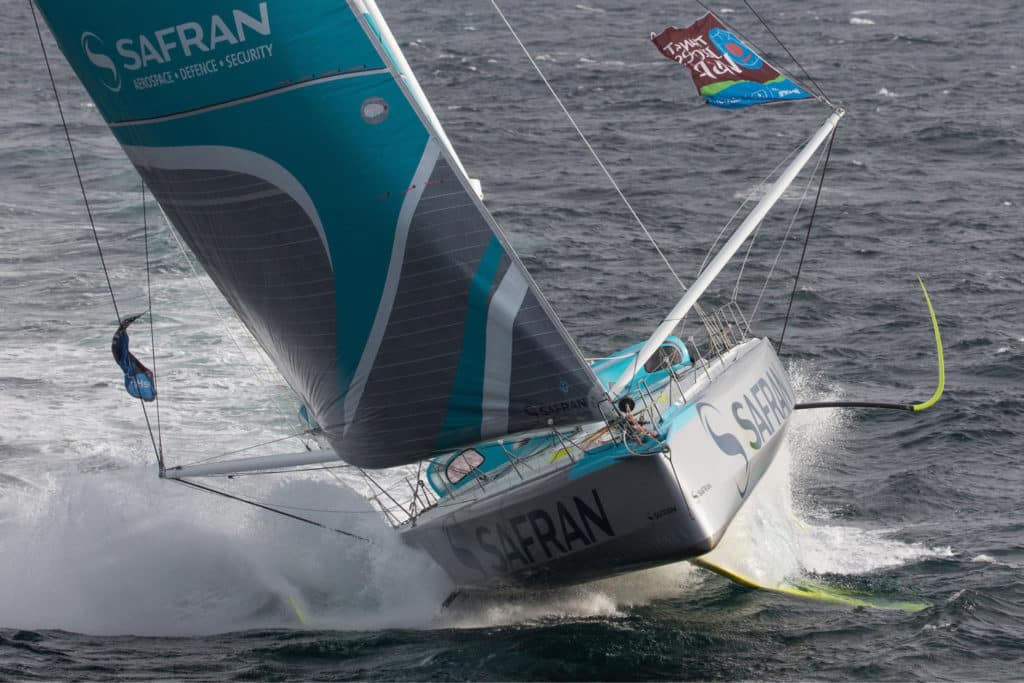
As their winter refits come to a close, the IMOCA teams have made their main technical choices ahead of a season that culminates in the pinnacle event of the class’ four year cycle: The Vendée Globe. For the next refit, which teams have scheduled for this summer, there will only be time for less significant adjustments ready for each skipper to spend three months sailing their respective yachts singlehanded non-stop around the world. In terms of ‘big ticket items’, such as the foils, there is now no going back.
With the introduction of one design masts and keels in the IMOCA fleet, teams and their designers have acknowledged that there are few gains to be made over the best boats from the previous generations. Instead, they have opened up a new avenue of development with complex-shaped foils, designed not only to prevent leeway (like conventional daggerboards) but also to improve righting moment (ie adding stability and power) and creating vertical lift to reduce wetted surface area and drag. The latest generation foil-assisted IMOCA 60s don’t fly, but they are certainly less immersed than boats not fitted with these foils. With these developments, so the trend, inspired by the flying America’s Cup catamarans and the popular Moth dinghies, is now extending across to monohulls with the latest IMOCA designs. Similar new generation foils have also been permitted to be used on Proto Minis in the Classe 6.50.
With the exception of Nandor Fa’s Spirit of Hungary, a classic design where budgetary constraints have been a decisive factor, all the latest generation IMOCA60s are equipped with these new generation foils.
However among teams with previous generation boats, opinion is a lot more divided about whether such foils should or should not be retrofitted to their tried and tested machines.
Jérémie Beyou, skipper of Maître CoQ, has fought a long battle within the IMOCA class against allowing the new generation foils. His reasoning was not so much against the march of progress, rather he considered that these new appendages would incur substantial extra cost (in the order of €300,000 to retrofit them). However, from the moment the decision was made by the IMOCA class to permit the new foils, Beyou has been constantly monitoring how they have performed.
“As with any innovation of this kind, progress was very slow initially,” Beyou observes. “Some were sceptical: Could the gains provided by the foils on certain points of sail offset the losses close-hauled with a much less efficient surface to prevent leeway than the ‘classic’ daggerboard configuration? In reality, we were quickly able to see that the potential for improvement was huge. Banque Populaire VIII‘s performance in the Transat Jacques Vabre convinced me that sooner or later this will be the way forward…”
In addition, Maître CoQ‘s retirement from that race enabled Beyou and the Maître CoQ shore crew to begin tackling the major retrofit work sufficiently early in order to finish ready to train with the other boats this spring. The Transat New York-Vendée (Les Sables d’Olonne) will provide Beyou and the Maître CoQ team with the opportunity to trial their newly equipped boat as well as to qualify for the Vendée Globe.
The other teams with competitive 2008 or 2012 generation IMOCA60s, have chosen not to fit the new foils, albeit for a variety of differing reasons.

On the 2012 Vendée Globe winner, now Paul Meilhat’s SMA, the repairwork required after she was abandoned during the IMOCA Ocean Masters’ Transat Saint-Barth – Port la Forêt race and subsequently left to drift has put the retrofitting of new generation foils out of the question.
For Yann Elies, skipper of Groupe Quéguiner Leucémie Espoir (formerly Marc Guillemot’s 2008 generation Safran) the problem is slightly different: “It’s clear that the foils provide a significant amount of added speed. Like everyone else, we questioned whether we should embark on this route. We gave up for several reasons: first of all, our refit started late and there was a risk we would miss out on essential sailing time.
“Next, we must not forget that the addition of foils must be considered in the wider context: Introducing foils considerably modifies the role of the rudders, which have to take on a greater role in preventing leeway. Finally, to bring this operation to a successful conclusion requires both investment, both financially and in time, neither of which we have. Given all these factors, we’ve instead opted for reliability by improving on the existing boat.”
Meanwhile PRB‘s performance has been boosted by other modifications and skipper Vincent Riou knows that he already has one of the fastest boats in the fleet. In his more controversial view, an IMOCA60 with a more classic foil configuration still has every chance of winning the Vendée Globe: “We haven’t found any reasons to fit PRB with [new generation] foils as they don’t improve our winning potential… The foilers would have to make a huge amount of progress to stand a greater chance of winning the Vendée Globe than us.”
Riou is setting the cat among the pigeons here by countering the general trend, but the first real indication of which have made the right decision will occur during the Transat New York – Vendée (Les Sables d’Olonne) on what should be a downwind course, in theory more favourable to the new generation foilers.
In the end, everyone seems convinced that foils, in some form or other, represent the future of IMOCA 60 design. However, this winter’s Vendée Globe will mark a transition and as yet no-one is in a position to say how the foilers will behave, in terms of their performance or reliability, over several months of racing on the most challenging of race courses. Computer VPP calculations indicate that an IMOCA60 equipped with new generation foils should be three to four days faster over the whole Vendée Globe course given ‘typical’ weather scenarios. But putting the theory into practice is another thing entirely. However whoever is right, such technological advancements are all vital parts of the rich tapestry that forms the IMOCA Ocean Masters Championship.









